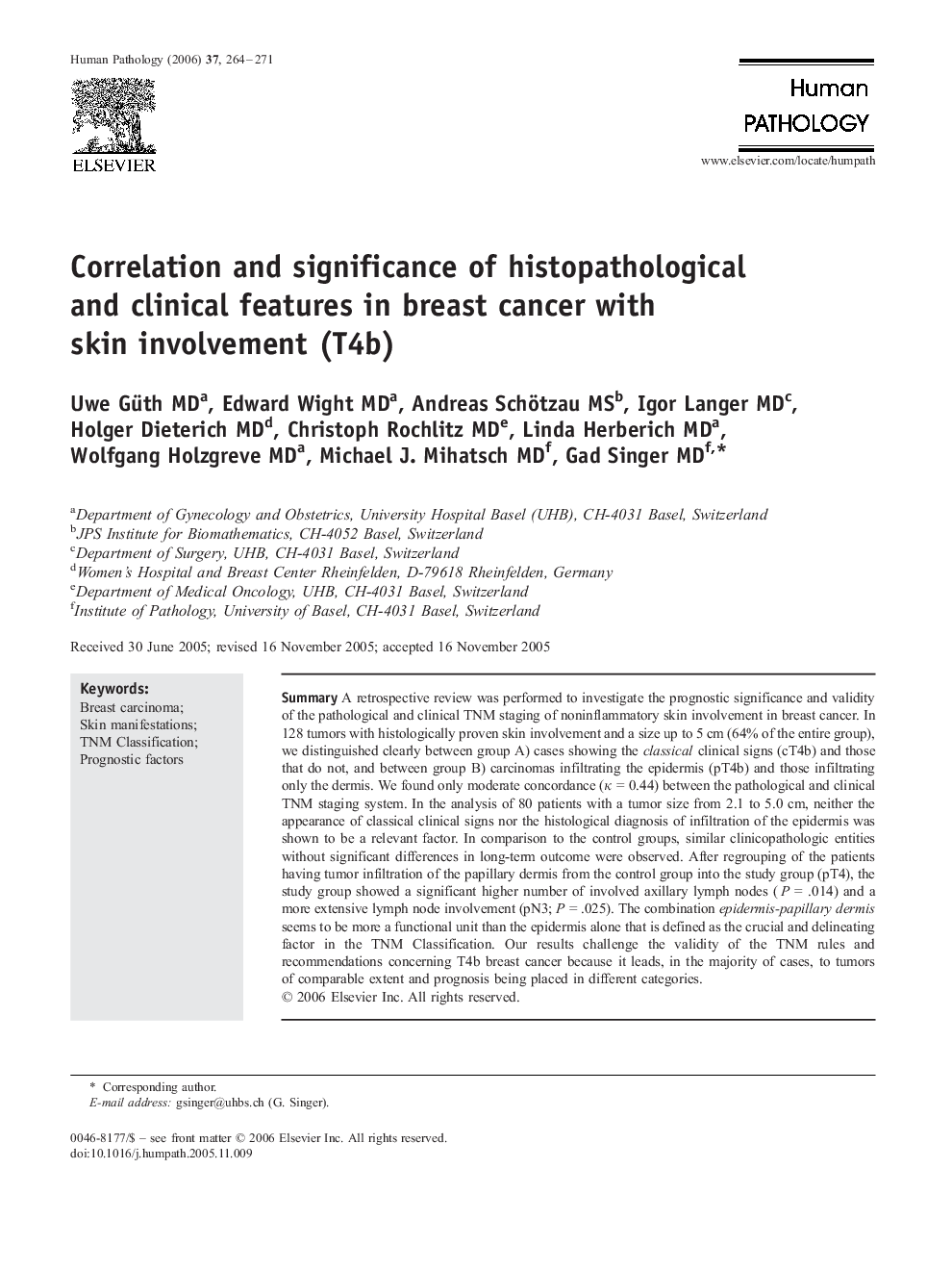| Article ID | Journal | Published Year | Pages | File Type |
|---|---|---|---|---|
| 4135722 | Human Pathology | 2006 | 8 Pages |
SummaryA retrospective review was performed to investigate the prognostic significance and validity of the pathological and clinical TNM staging of noninflammatory skin involvement in breast cancer. In 128 tumors with histologically proven skin involvement and a size up to 5 cm (64% of the entire group), we distinguished clearly between group A) cases showing the classical clinical signs (cT4b) and those that do not, and between group B) carcinomas infiltrating the epidermis (pT4b) and those infiltrating only the dermis. We found only moderate concordance (κ = 0.44) between the pathological and clinical TNM staging system. In the analysis of 80 patients with a tumor size from 2.1 to 5.0 cm, neither the appearance of classical clinical signs nor the histological diagnosis of infiltration of the epidermis was shown to be a relevant factor. In comparison to the control groups, similar clinicopathologic entities without significant differences in long-term outcome were observed. After regrouping of the patients having tumor infiltration of the papillary dermis from the control group into the study group (pT4), the study group showed a significant higher number of involved axillary lymph nodes (P = .014) and a more extensive lymph node involvement (pN3; P = .025). The combination epidermis-papillary dermis seems to be more a functional unit than the epidermis alone that is defined as the crucial and delineating factor in the TNM Classification. Our results challenge the validity of the TNM rules and recommendations concerning T4b breast cancer because it leads, in the majority of cases, to tumors of comparable extent and prognosis being placed in different categories.
